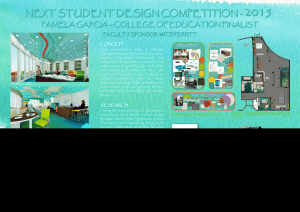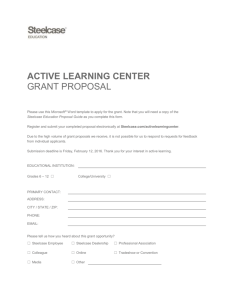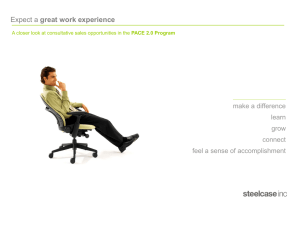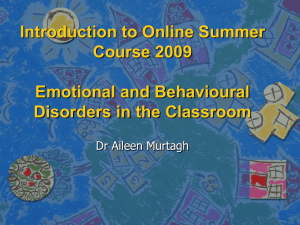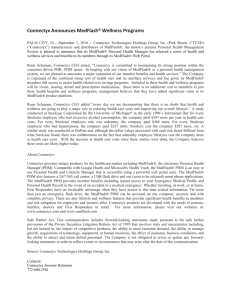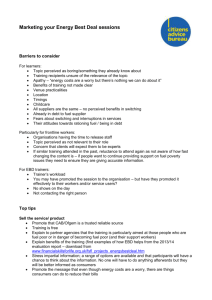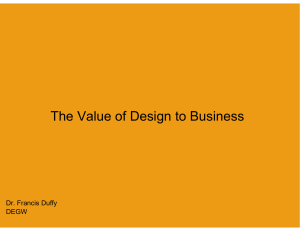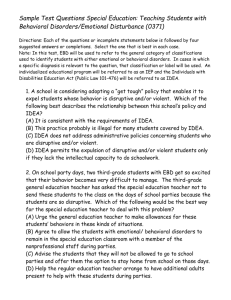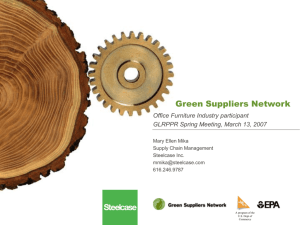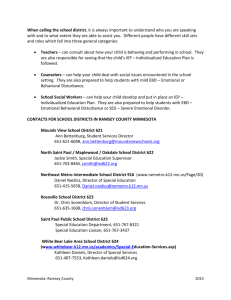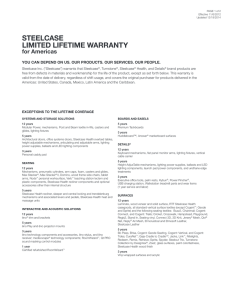360 Magazine: A new learning curve
advertisement
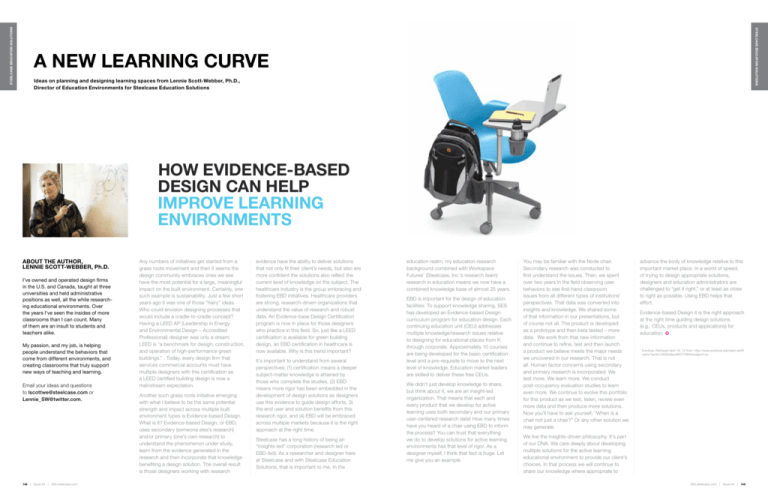
Steelcase education solutions Steelcase education solutions A new learning curve Ideas on planning and designing learning spaces from Lennie Scott-Webber, Ph.D., Director of Education Environments for Steelcase Education Solutions How Evidence-based Design Can Help Improve Learning Environments About the author, Lennie Scott-Webber, Ph.D. I’ve owned and operated design firms in the U.S. and Canada, taught at three universities and held administrative positions as well, all the while researching educational environments. Over the years I’ve seen the insides of more classrooms than I can count. Many of them are an insult to students and teachers alike. My passion, and my job, is helping people understand the behaviors that come from different environments, and creating classrooms that truly support new ways of teaching and learning. Email your ideas and questions to lscottwe@steelcase.com or Lennie_SW@twitter.com. 148 | Issue 64 | 360.steelcase.com Any numbers of initiatives get started from a grass roots movement and then it seems the design community embraces ones we see have the most potential for a large, meaningful impact on the built environment. Certainly, one such example is sustainability. Just a few short years ago it was one of those “hairy” ideas. Who could envision designing processes that would include a cradle-to-cradle concept? Having a LEED AP (Leadership in Energy and Environmental Design – Accredited Professional) designer was only a dream. LEED is “a benchmark for design, construction, and operation of high-performance green buildings.” . Today, every design firm that services commercial accounts must have multiple designers with this certification as a LEED certified building design is now a mainstream expectation. Another such grass roots initiative emerging with what I believe to be the same potential strength and impact across multiple built environment types is Evidence-based Design. What is it? Evidence-based Design, or EBD, uses secondary (someone else’s research) and/or primary (one’s own research) to understand the phenomenon under study, learn from the evidence generated in the research and then incorporate that knowledge benefiting a design solution. The overall result is those designers working with research evidence have the ability to deliver solutions that not only fit their client’s needs, but also are more confident the solutions also reflect the current level of knowledge on the subject. The healthcare industry is the group embracing and fostering EBD initiatives. Healthcare providers are strong, research-driven organizations that understand the value of research and robust data. An Evidence-base Design Certification program is now in place for those designers who practice in this field. So, just like a LEED certification is available for green building design, an EBD certification in healthcare is now available. Why is this trend important? It’s important to understand from several perspectives: (1) certification means a deeper subject-matter knowledge is attained by those who complete the studies, (2) EBD means more rigor has been embedded in the development of design solutions as designers use this evidence to guide design efforts, 3) the end user and solution benefits from this research rigor, and (4) EBD will be embraced across multiple markets because it is the right approach at the right time. Steelcase has a long history of being an “insights-led” corporation (research led or EBD-led). As a researcher and designer here at Steelcase and with Steelcase Education Solutions, that is important to me. In the education realm, my education research background combined with Workspace Futures’ (Steelcase, Inc.’s research team) research in education means we now have a combined knowledge base of almost 25 years. EBD is important for the design of education facilities. To support knowledge sharing, SES has developed an Evidence-based Design curriculum program for education design. Each continuing education unit (CEU) addresses multiple knowledge/research issues relative to designing for educational places from K through corporate. Approximately 10 courses are being developed for the basic certification level and a pre-requisite to move to the next level of knowledge. Education market leaders are skilled to deliver these free CEUs. We didn't just develop knowledge to share, but think about it, we are an insight-led organization. That means that each and every product that we develop for active learning uses both secondary and our primary user-centered research data! How many times have you heard of a chair using EBD to inform the process? You can trust that everything we do to develop solutions for active learning environments has that level of rigor. As a designer myself, I think that fact is huge. Let me give you an example. You may be familiar with the Node chair. Secondary research was conducted to first understand the issues. Then, we spent over two years in the field observing user behaviors to see first-hand classroom issues from all different types of institutions’ perspectives. That data was converted into insights and knowledge. We shared some of that information in our presentations, but of course not all. The product is developed as a prototype and then beta tested – more data. We work from that new information and continue to refine, test and then launch a product we believe meets the major needs we uncovered in our research. That is not all. Human factor concerns using secondary and primary research is incorporated. We test more. We learn more. We conduct post-occupancy evaluation studies to learn even more. We continue to evolve this portfolio for this product as we test, listen, review even more data and then produce more solutions. Now you’ll have to ask yourself, “When is a chair not just a chair?” Or any other solution we may generate. advance the body of knowledge relative to this important market place. In a world of speed, of trying to design appropriate solutions, designers and education administrators are challenged to “get it right,” or at least as close to right as possible. Using EBD helps that effort. Evidence-based Design it is the right approach at the right time guiding design solutions (e.g., CEUs, products and applications) for education. ° 1 verblue, Retrieved April 18, 12 from: http://www.everblue.edu/leed-certifi E cation?gclid=CKS3x9ajv68CFYRM4Aodgwz7yw We live the insights-driven philosophy. It’s part of our DNA. We care deeply about developing multiple solutions for the active learning educational environment to provide our client’s choices. In that process we will continue to share our knowledge where appropriate to 360.steelcase.com | Issue 64 | 149
